
Cross a cucumber and a watermelon and what do you get? Probably nothing in real life but the small cucurbit Melothria scabra fits that bill. This herbaceous climber in the cucumber family (Cucurbitaceae) is grown for its tiny edible fruit that looks just like a miniature striped watermelon. The Spanish vernacular sandiita means just that – “little watermelon”, but it goes by many other names in both Spanish and the languages of the indigenous people who have eaten it since pre-Columbian times – including sandia de ratón, or mouse melon (maybe because the fruit is just the size for a mouse-sized picnic?). North of the border this unusual plant has been given many different common names by seed companies trying to promote it, including mouse melon, Mexican sour gherkin, Mexican sour cucumber and cucumelon.
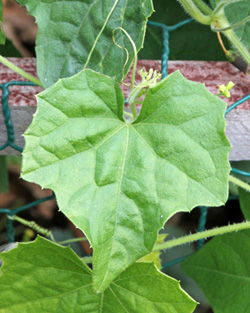
Native to Mexico and Central America, in the US it is an edible curiosity seen primarily in farmers markets and backyard gardens rather than in mainstream, commercial agriculture. The fruits are a tasty conversation piece when used whole in salads or other recipes. With its delicate foliage, it can be used as an edible ornamental in containers or other plantings.
The plants look very similar to regular cucumbers, with palmate leaves and curling tendrils on long vines but are just slightly smaller in size. A fast-growing tender tropical perennial, it is easily grown as an annual in temperate climates.
Small, solitary yellow flowers with five petals are produced in the leaf axils. This plant is unusual among cucurbits in that female flowers appear before male flowers, not the reverse like regular cucumbers.
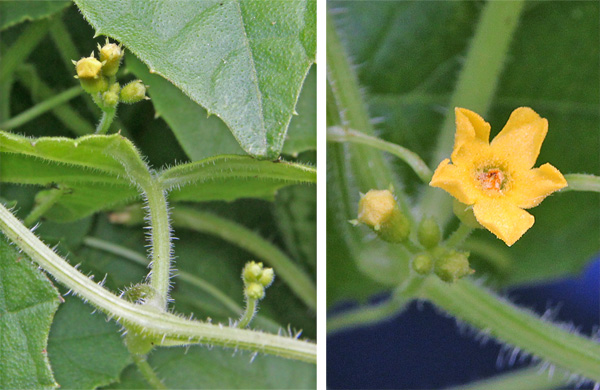
These are followed by oblong, light-green fruits with darker striations about the size of a large grape. Most seed packets indicate 70-75 days to harvest, with the plants producing from mid-summer until first frost. The white, crisp interior flesh has a crunchy texture. The flavor is generally described as cucumber-like with a hint of sourness.
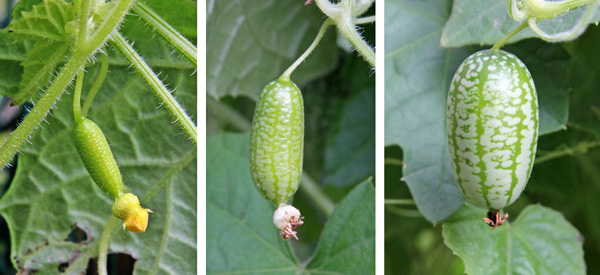
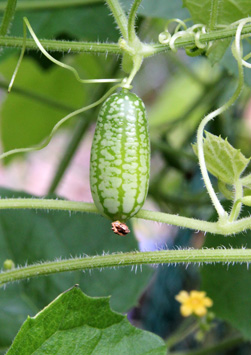
They can be eaten raw, used in stir fries, or pickled like cucumbers. The young, tender fruits are best for eating raw, while the older fruits with more developed seeds are better for pickling.
Mouse melon is as easy to grow as regular cucumbers and does best in humus-rich, well-drained soil in full sun. Start the seeds indoors 4-6 weeks before the average last frost and plant outside 9-12 inches apart at the same time regular cucumbers would be planted, or direct sow after last frost. Most seeds should germinate within 10 days.
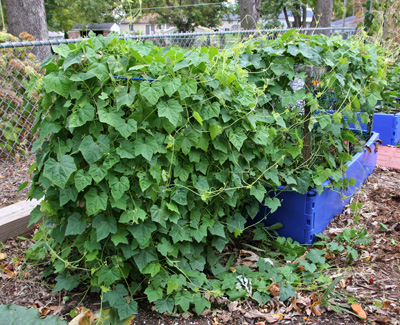
Be aware that the tender young stems and tendrils are easily damaged by cold or rough handling. Once the weather warms, this plant grows rampantly, quickly covering a small trellis or wire cage. Under ideal conditions the plants can grow up to 10 feet and produce abundant fruit. It is best to grow these plants vertically rather than on the ground as slugs will damage fruit in contact with the soil. It’s also easier to see and pick the fruits hanging down from a trellis. Unlike regular cucumbers, mouse melon doesn’t have any significant pests.
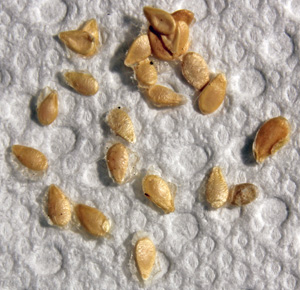
Seeds can be saved from year to year. Choose the ripest fruits – typically those that have naturally fallen from the plant – and allow to ripen a few weeks longer. Scoop out the seeds and allow to ferment in water for a few days. Remove the seeds that have dropped to the bottom and air dry for a couple of weeks on a screen in a cool, well-ventilated area. When brittle they can be stored in airtight containers for several years. Or if you’re feeling lazy just keep the whole fruits in a cool location above freezing, and plant the entire thing in the spring!
If grown as a perennial, bring indoors before first frost and keep the dormant rootstock almost completely dry in winter at temperatures above 50ºF. New vines will vigorously re-sprout the following spring.
– Susan Mahr, University of Wisconsin – Madison
Latest from Wisconsin Yard & Garden
Ask Your Gardening Question
If you’re unable to find the information you need, please submit your gardening question here:





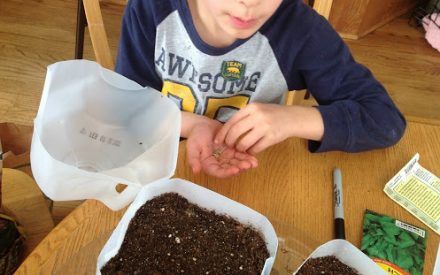 Seed Starting
Seed Starting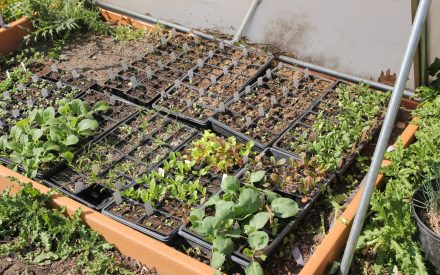 Growing Vegetables at Home: Questions and Answers
Growing Vegetables at Home: Questions and Answers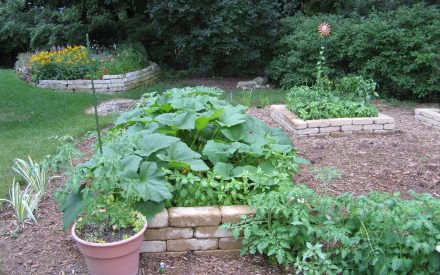 Growing Vegetables in Containers
Growing Vegetables in Containers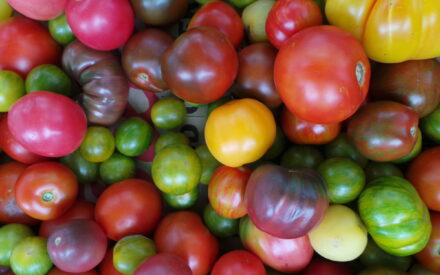 Homegrown Tomatoes for Wisconsin
Homegrown Tomatoes for Wisconsin


